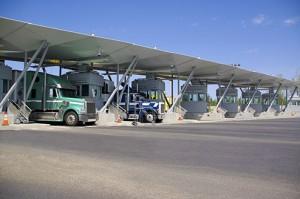January 2014 marked the 20th anniversary of a key political achievement – the North American Free Trade Agreement (NAFTA). Today, two decades after the trade pact was signed into law, some of the promised benefits materialized, while others are still emerging.
When it comes to United States and Mexico trade, business is booming and the opportunities have never been bigger. The U.S. is Mexico’s largest trading

Here are the 5 thing to focus on when it comes to Mexican Import-Export Logistics
- Map out the flow of your materials
Take the time to step back and look at the big picture. Consider creating a value stream map of your material flow from the point of origin to final destination. This might include:• Identifying key milestones such as when goods arrive at and depart the border- Defining carrier transit times
- Identifying buffer times at the border for customs inspection contingencies,
- Understanding the amount of inbound material you have in the pipeline
- Adjusting internal inventories
It’s worth taking the time to define U.S. and Mexican carriers’ roles. As you do, don’t forget to consider the border drayage piece of the puzzle. That short five to ten mile leg of the route can be the weakest link in your supply chain if you don’t monitor it appropriately.
- Open the lines of communication
Maintain open and constant communications with every supply chain stakeholder:• Meet with your suppliers, customers, carriers, customs brokers, distribution centers, and production control to define roles and critical handoffs- Exchange contact information
- Define escalation lists for issues, especially for after hours and urgent shipments
- Make sure any 3PL partners you engage are knowledgeable, bilingual and have experience in all three areas: the U.S., Mexico and the border
- Avoid border delays
The biggest obstacles most importers/exporters face are with border crossings. Be exacting when choosing customs brokers. They’ll represent you and your supply chain partners to U.S. and Mexican Customs officials. Be sure to:- Work with your shippers and customs broker to ensure that the Mexican equivalent of a power of attorney is in place well before your network goes live
- Train shippers on what documentation to provide
- Set up a pre-established schedule to ensure that no paperwork is forgotten and trailers are never stuck at the border
- Use interchange agreements to eliminate border trans-loads
The good news? American and Mexican transportation providers are accustomed to working together. Most already have a pre-existing network of interchange agreements in place. Take the time to validate carriers you’ll use on both sides of the border are authorized to haul each other’s trailers. This way, you can avoid the extra expense of trans-loading freight between Mexican and American trailers. - Be vigilant about security
Security remains a critical consideration when doing business with Mexico – particularly for border crossings. There are some steps you can take to prevent security issues from derailing your import/export business:- Participate in programs sponsored by U.S. and Mexican Customs organizations like Custom-Trade Partnership Against Terrorism (C-TPAT), Free and Secure Trade (FAST), and Nueva Esquema Empresa Certificada (NEEC)
- Be on the lookout for best practices and ways to prevent theft and smuggling
- Set clear carrier requirements, like using GPS in both the U.S. and Mexico
- Encourage real-time communication with drivers
- Work closely with the 3PL of your choice to stay safe
Experts estimate truck trade between the U.S. and Mexico could reach $463 billion by 2020, which is a 44% increase from 2012. If you’re an American company interested in importing and exporting to and from Mexico, now is the time to seriously consider the future role Mexico will play in your supply chain. Need help getting started? Contact us by using the form on the right side of this article.
Frank Bateman, Director of Customer Logistics for Ryder Supply Chain Solutions, joined Ryder in 2000 and his portfolio includes 3PL, Transportation Management, Distribution Management, and Customs Brokerage services. Frank leads a cross-functional team of experts from Ryder USA, Ryder Cross Border and Ryder Mexico.

